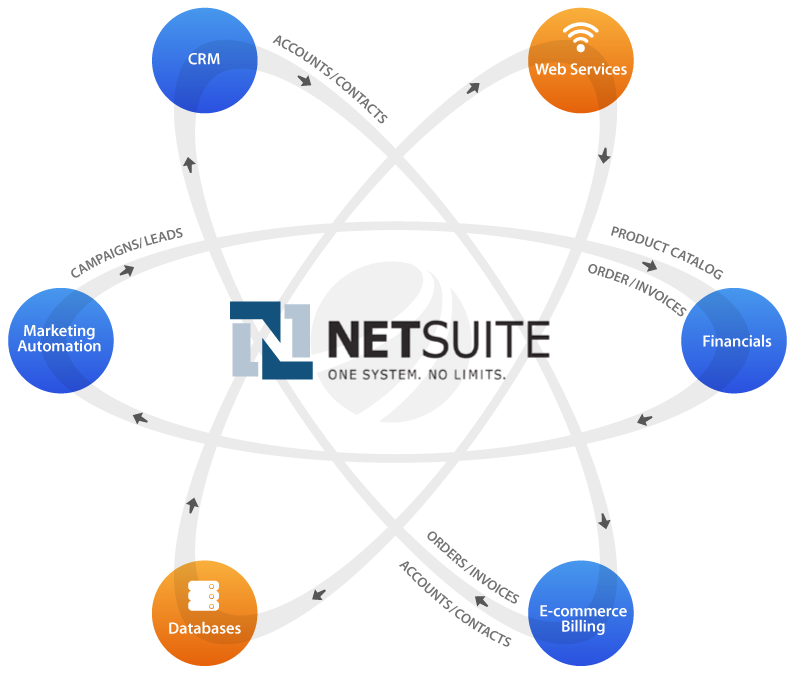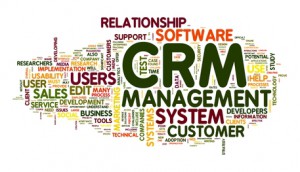Student
When should an Organization Implement a Global ERP
 Going global: Is it time to streamline your ERP?
Going global: Is it time to streamline your ERP?
Today in class we discussed the difference between IT many years ago and today where years ago in order to include IT in your business you needed to spend a lot of money implementing complex systems and today with software as a service and cloud models you just need a credit card and an idea. This got me thinking about when a business should switch from individual systems to an expensive ERP. As with many things, I believe it very much depends if an organization should use an ERP or continue with individual systems. When looking into what it depends on I found this article by NetSuite which has their recommendations on how you know your organization is ready for an ERP. NetSuite Inc. does sell ERP, CRM, and eCommerce software solutions so they are biased because they want you to buy their ERP, and the conclusion basically spells that out, but the article is in the educational materials section of their website and I believe the body of the article makes some good points.
The article focuses on organizations who have multiple locations in multiple countries and recommends ERPs to gain a more centralized management approach. The first subheading says that an organziation should implement one ERP system if they are duplicating ERPs or resources between officers or countries. At first this seemed like a logical conclusion, duplicating systems means more money spent and less sharing between offices or countries. This continues in the second point, if a company is manually reconciling accounting and finance information. Having all of the finance information in one place for the whole organization would make sense, especially when paired with their last point of a company struggling with many tax and legal issues. A single ERP could make filing taxes and organizing the financing of a company easier. I don’t, however, completely agree that a global ERP will fix all of an organizations problems, or that it won’t cause more problems. Having all of the decision making in a single are could cause legal and operational issues. Businesses in different countries run differently, be it culturally or legally. Having a once size fits all approach may do more harm than good. Take something like sales as an example. One country might do most of its sales remotely while another country sales are all done in person. When trying to implement an ERP with a single sales process this could cause issues.
Do you think a single ERP for a multinational company is the best approach? What benefits would the organization reap? Are there possible downsides? Do the benefits out way the downsides? When do you think an organization should implement a global ERP?
End of On-Premises ERP
We discussed a lot about the merits of both on-premises and cloud based ERPs, but according to Gartner, on-premises ERPs will be considered “legacy systems” by 2016.
The main argument from Gartner is that companies are seeking to lower IT costs and to increase flexibility. Additionally, on-premises ERPs created more value for consultancies that helped companies implement them than the companies themselves. The thought of an integrated ERP was great in theory, but many companies have failed to capture this supposed value. I don’t know if on-premises ERPs will be considered legacy by 2016 because many companies will be unwilling to abandon systems they’ve spent millions on, but I agree that they are on their way out, regardless of industry. Do you guys agree with Gartner’s assertion that on-premises ERPs will be considered legacy systems?
3 Ways CRM Improves Your Business Processes
According to CIO.com, the three ways CRM improves business processes are:
- The CRM System As a Smart File Cabinet – CRM systems make sure everyone in the organization is aware of the customer’s relationship history. The customer’s information is collected and organized.
- The CRM System for Collaboration and Coordination – CRM enables collaboration and coordination among various departments, which leads to better account management.
- The CRM System as Task Master and Process Drive – CRM adds tighter linkage with other systems and business processes, which increases the business’s efficiency.
What are the advantages of knowing the customer’s relationship history? What are the disadvantages?
Systems Thinking in the Public Sector
Africa: What Can Evaluators Learn From Complexity Science and Systems Thinking?
For the past few years, I have worked at a non-profit legal services provider. When I was reading the article about systems thinking that we were assigned for this class, I couldn’t help but think that although the idea made sense for information systems, it would never work in the some industries (namely in the legal field). Given the experience that I have working with lawyers, I couldn’t picture them ever looking at a problem holistically instead of drilling into the details because they are all very process-thinking oriented.
However, this article kind of served as a counter argument to my thinking. Here are public policymakers that are using systems thinking to integrate economic, social and environmental growth into a single ‘map of development.’ I think it’s cool that they were able to use systems thinking despite the fact that there is probably a significant amount of constraints when writing public policy, including (I’m assuming) a pretty strict budget. This article proves that systems thinking can be applied virtually any industry if you are willing to shift your mindset.
Updated Project Proposal- Public Service
Problem: An overwhelming amount of trash/litter in different regions of Philadelphia.
Innovation vs. Creativity
In class we talked about being innovative versus being creative. An article I read cites Shawn Hunter, author of “Out Think: How Innovative Leaders Drive Exceptional Outcomes,” who discerns the two as follows:
“Creativity is the capability or act of conceiving something original or unusual while innovation is the implementation or creation of something new that has realized value for others.”
The article goes on to discuss how creativity does not necessarily mean innovation, though it can lead to it. In a brainstorming session where ideas are flying around, that’s creativity. It isn’t until some value-driving idea is actually implemented that innovation sets in.
Shawn Hunter also chastises businesses for trying to create creativity on demand, by forcing employees into brainstorming sessions instead of focusing on building innovative processes and products. He claims that innovation doesn’t have to be the next big thing, it can simply be a tweak to a current process that makes the business operate better. He also states that it’s crucial that a business and its entire culture do everything possible to foster innovation in the workplace. The article cites the creation of the Starbucks Frappuccino as an example of innovation. Originally, the idea was rejected by company leaders. It wasn’t until the product was quietly made and sold to customers that it became a hit and was officially introduced into the product line.
Do you think that innovation and creativity necessarily need to go hand in hand? Can one exist without the other? Can one be successful without the other? In your experiences in the workplace, does management tend to focus more on innovation or creativity?
Death By PowerPoint
According to Forbes.com, the six ways to avoid “Death By PowerPoint” are:
- Mix up your media
- Send content ahead of time
- Intersperse content with discussion, group exercises, and reflection time
- Give handouts
- Use eye catching software
- Use props
These six steps are crucial for delivering a successful PowerPoint presentation because it addresses all styles of learning and promotes audience engagement. Most people retain information better when they are actively engaged rather than just listening to someone relay information. The two items that never cross my mind when it comes to delivering PowerPoint presentations are send content ahead of time and giving handouts. From the article, I learned that it is important to send content ahead of time because it allows people to come prepared to discuss your content and ask questions rather than listen to your presentation. I also learned that handouts are important because people love knowing they don’t have to take full notes and can simple listen. Do you think sending content ahead of time makes your PowerPoint presentation pointless or enhances it? Do handouts lead to information overload?
http://www.forbes.com/sites/work-in-progress/2014/11/14/six-ways-to-avoid-death-by-powerpoint/




